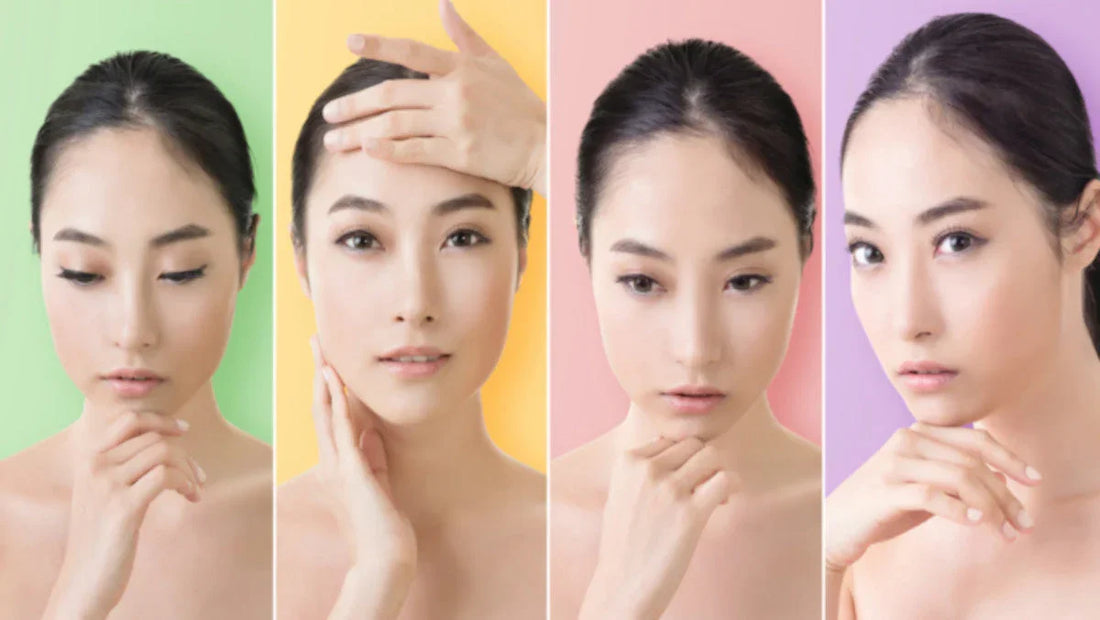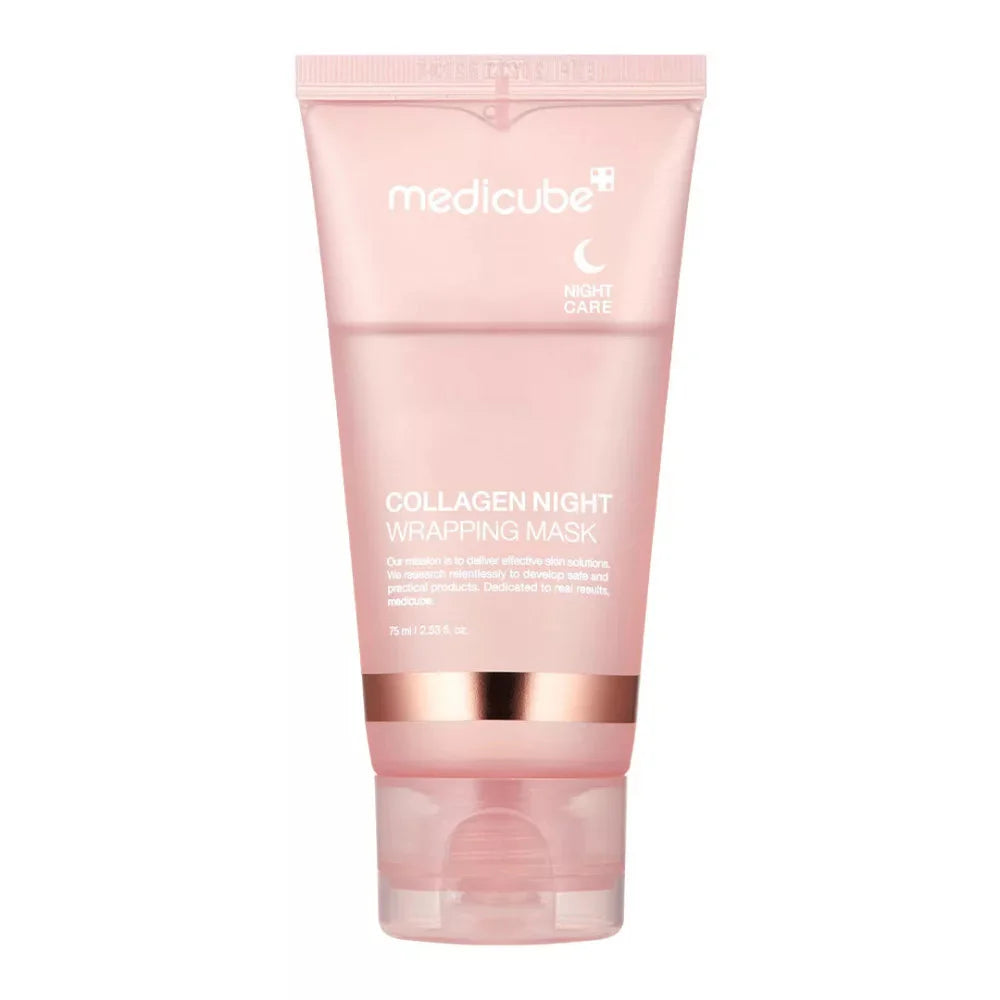
FAQs and essential questions to ask yourself to understand everything about K-beauty and Korean cosmetics treatments
Partager
Frequently Asked Questions by K-Beauty Beginners
K-beauty doesn't have to be complicated, and in this article, we'll answer the questions every beginner (and beginner) asks before using Korean skincare products. It's perfectly normal to have questions, and we're happy to provide you with the answers that will allow you to enjoy Korean cosmetics and K-Beauty with maximum effectiveness. Here we go, the first question!

Question number 1. What is K-Beauty?
K-beauty stands for Korean Beauty, which refers to Korean skincare and makeup. Korea boasts many different beauty brands, each with their own innovations, concepts, and ideas. Examples include Abib, Médicube, and Beauty of Joseon. You'll also find many more in our online store. And for even more information, bookmark our complete K-Beauty guide .
Question number 2. K-Beauty and Western cosmetics: What are the differences?
K-Beauty relies on gentle yet effective formulations. It includes natural ingredients such as ginseng, snail mucin, and green tea. This skincare ritual focuses not only on treating existing skin problems but also on preventing future ones. K-beauty takes a holistic approach to skin care. In contrast, Western skincare takes a more clinical approach with formulations that aim to directly address specific skin concerns.

Question 3: Why do Koreans include 10 steps in their skincare routine? Is it still necessary?
K-Beauty is known for its 10-step skincare routine, but not everyone uses 10 products. Some even use more because their skin truly needs it. Ultimately, it all comes down to personal preference and, of course, skin type. At Coree Beauty, we recommend a minimum of 8-step skincare routines.
1. Oil cleanser
2. Water cleanser
3. Exfoliant
4. Tonic
5. Facial treatments
6. Moisturizer
7. Mask
8. Sun protection
Remember: In Korean cosmetics, the most essential steps are cleanser, toner, moisturizer, and sunscreen.
Question number 4. Is K-Beauty only for Asian skin?
Not at all. Besides, regardless of skin color, biological characteristics are similar. The most important thing is to first understand your skin type in order to use the most suitable products and ingredients.
Concretely, the most common skin types are: oily skin, dry skin, acne-prone skin and sensitive skin.
Question number 5. Can men use K-Beauty products for women?
Skin is an organ, and gender has nothing to do with the product you use. Again, we repeat: you need to find the right dermatological-cosmetic ingredient for your skin type.
Question number 6. What do these numbers with Korean words that are always on every K-beauty product mean?
On most K-Beauty products, you'll likely see these characters: "제조" and "hasta." "제조" means manufactured and "hasta" means until. These are the manufacturing and expiration dates.
Question number 7. What is a K-beauty toner and how is it different from essence?
First off, these two Korean cosmetics are commonly used as the first step of your skincare routine, right after cleansing. Toners are used to balance your skin's pH level and help remove any impurities left behind after cleansing. In other words, a toner helps your skin better absorb the other products in your K-Beauty routine. It's also worth noting that essences are more potent cosmetic products than toners. They contain nutrients in higher concentrations, which allows for specific effects depending, of course, on the main ingredient. They're usually a bit more watery for quick absorption, and given their effectiveness, they often cost a bit more.

Question number 8. What is the difference between serums and ampoules?
First of all, both can be part of your K-beauty skincare routine. Similar to toners and essences, they differ in both ingredient concentration and consistency. Serums tend to be a bit lighter than ampoules and a bit more refreshing. Ampoules, on the other hand, are more nourishing and a bit heavier than serums, making them very hydrating.
Question number 9. What is a fabric mask?
You may be familiar with rinse-off or clay masks. The main purpose of both a rinse-off and a clay mask is to deeply cleanse your face. Korean sheet masks , soaked in highly concentrated essences, have the particularity of conforming to the shape of the face and their application generally lasts for 10 to 15 minutes. This is the time needed to give your skin a nutritional boost. It is best to use sheet masks 2 to 3 times a week. This is the best way to nourish your skin with high-quality cosmetic ingredients. In the Korean skincare routine, sheet masks are generally used after toner and before moisturizer.
Hot Deal : Our coreebeauty.com store offers free express delivery to Zurich, Basel, Geneva, Lausanne, and anywhere in Switzerland and Europe from CHF 39!
Question number 10. Do pimple patches really make acne go away?
The goal of acne patches often seen on K-beauty brands is to treat pimples hygienically and naturally, not to forcefully pop them, ultimately leaving ugly scars. Many people wear makeup daily. But with acne, let's face it, this is very, very bad. It can even worsen the condition of the skin, which can't breathe properly. By applying an acne patch and then applying makeup afterward, you help keep your skin clean. You should apply the acne patch after cleansing your skin and removing impurities with a toner. Above all, don't apply the patch at the end of your skincare routine, as serums and moisturizers that are too rich will prevent it from sticking properly.
Question number 11. How to use AHAs and BHAs?
This is a (very) recurring question from our readers, customers, and clients. Let's start by saying that you can incorporate both AHAs and BHAs into your Korean skincare routine to eliminate irritation, improve overall skin texture, achieve smoother skin, and wake up with glowing skin. In fact, there are several Korean skincare brands that offer products containing both ingredients in the form of toners, facial essences, or facial moisturizers. Additionally, AHAs and BHAs can be combined with other ingredients such as hyaluronic acid to help give your skin a boost of hydration without making it oily. If you have sensitive skin, you can pair your Korean AHA or BHA skincare with Korean beauty products containing amino acids to avoid any stinging or burning sensation from the acids in the skincare. At coreebeauty.com you will find several toners with AHA/BHA, such as COSRX AHA/BHA CLARIFYING TREATMENT TONER .
Question number 12. Do I have to follow all the steps every day?
While a complete Korean skincare routine involves several steps, you can customize it based on your skin's needs. Some steps, like cleansing and moisturizing, are essential daily, while others, like exfoliation, can be done less frequently.
Last question: Why are Korean beauty products often packaged in large containers?
Indeed, there are many questions about this, and many people wonder why the bottle is only half full? The main reason is the air circulation in the bottle or tube. Some ingredients have fairly short expiration dates and need more space to be preserved with enough oxygen to extend the expiration date. Another reason is that K-Beauty products come from Asia via air freight. Manufacturers tend to leave more space for tube products because they expand due to pressurization and high altitudes. Examples of this include Returnu and Skin 1004 sunscreens .
So, we hope we've answered the main questions girls ask before starting their first K-beauty routine. Of course, our FAQ can't be completely exhaustive, and it's a good idea to supplement your reading by browsing our blog.
And if you need personalized advice on choosing a K-Beauty product or developing a routine suited to your skin type, don't hesitate to contact us!



